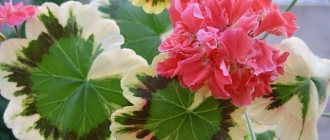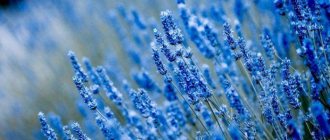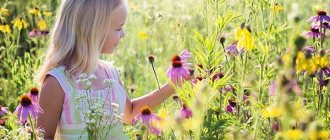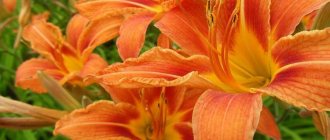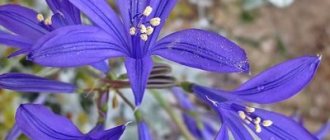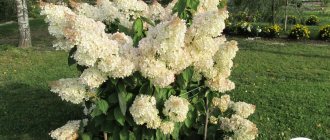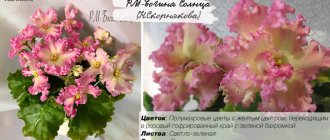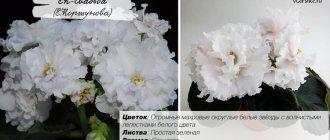In order for the flower bed in the garden to please the eye all summer, you can use both annual and perennial flowers of different colors, shapes and sizes. It is important that the flowering period of the plants be long or strictly seasonal - in the second case, you will have to think about planting in such a way that the flowers bloom, replacing each other.
Let's find out which outdoor flowers are best to plant so that the flower bed remains beautiful and bright throughout the summer.
Photos and names of perennial unpretentious flowers that bloom all summer from May to September
Perennials are plants that do not need to be replanted every season. Their root system tolerates winter well and produces new growth in the spring. Perennials have a number of advantages, the main ones of which are:
- good winter hardiness;
- the ability to reproduce well;
- variety of species;
- long flowering period;
- ability to grow without transplantation for many years;
- low maintenance requirements.
Perennials, however, are more susceptible to root diseases than annual plants.
To create a flower bed that does not require special care, perennials are most suitable. Once you have completed all the plantings, you can enjoy a beautiful flower garden for several years. I recommend learning the basic rules for forming a flower bed from the article “What flowers to plant in a flower bed so that they match in color and height.”
To simplify the formation of a flower bed according to the color of perennials, you can turn to monochrome flower beds. In this case, you will get unusual stylish flower beds, and there will be no problems with an unsuccessful color combination.
Yellow
Flower beds made up of yellow flowers that bloom all summer lift your spirits and charge you with energy.
Perennials in yellow tones can be represented by:
- coreopsis;
Coreopsis. - rudbeckia;
Rudbeckia. - St. John's wort;
St. John's wort. - heliopsis;
Heliopsis. - astilbe;
Astilbe. - daylily;
Day-lily. - ordinary cuff;
The cuff is ordinary. - loosestrife
Loosestrife.
Flower beds in yellow tones are distinguished by the brightness of their colors. People who choose yellow are optimistic and radiate vitality. It is easy and pleasant to communicate with them.
Blue
The color blue symbolizes dreaminess and hope. Blue flower beds evoke pleasant thoughts, calm, and put you in a lyrical mood. In a blue flower garden you can plant:
- lavender;
Lavender. - blue chamomile;
Blue chamomile. - cornflower;
Cornflower. - phlox;
Phloxes. - delphinium;
Delphinium. - lupine;
Lupine. - periwinkle;
Periwinkle. - loosestrife;
Loosestrife. - oak sage.
Oak sage.
Blue flower beds are chosen by dreamers and romantics.
Ground cover and low growing perennials
Garden Tradescantia
An attractive perennial with beautiful blue flowers and ground cover properties. By planting Tradescantia in a flowerbed, you can forget about bald spots and unsightly bald spots that form in places where flowers are missing. A wonderful continuous carpet is formed on the flowerbed.
Tradescantia is beautiful not only for its flowers, its foliage is also attractive - bright green, lush, with interestingly shaped individual leaves. The plant is short, so it can serve as an excellent background for taller specimens.
Cornflowers
A simple wildflower that can serve as a wonderful backdrop for more luxurious plants. Cornflower requires virtually no care and feels great, literally growing like a weed. Breeders have developed varieties of cornflower not only in the usual heavenly shade, but also in white, yellow, and even pink. There are also terry varieties that are particularly decorative.
This perennial wakes up in the spring and blooms all summer long, requiring no care or maintenance. A great option for busy gardeners who cannot afford to visit their dacha often.
Dianthus
This is an extremely unpretentious perennial plant, but at the same time quite decorative. It blooms for a long time - for a month and a half in the summer, the carnation bushes are completely strewn with pink-purple flowers. Note that the flowers themselves are quite small, but due to the large number of plantings they look lush and elegant.
This variety of carnation is very good as a frame or edging of a flower bed. It can also be used as summer borders for garden paths.
alpine aster
A cute herbaceous plant of small size: the alpine aster reaches only 10-30 cm in height. It grows best in partial shade on loose, permeable soil. The plant blooms for a very long time - about 3 months without a break. The Rosea variety is distinguished by its particularly long decorative period.
Begonia everblooming
A very elegant, delicate plant with beautiful flowers. Begonia of this species can please the eye throughout the summer - that is why it is so loved by gardeners. If in late autumn the begonia is moved indoors from the flowerbed, it will bloom almost all year round.
Everything about this plant is beautiful: the leaves, the flowers, and the combination of leaves and flowers. You can grow begonia not only with green leaves, but also with bronze leaves - the appearance of such varieties is very impressive.
The bushes themselves are low - reaching only 15-30 cm in height. There is one minus - the plant is demanding both in terms of growing conditions and care. The soil should be very fertile, nutritious, moderately moist, slightly acidic. It is necessary to carefully water the begonia, as its delicate roots are sensitive to moisture and can easily rot.
Gentian
The plant has beautiful blue or dark blue flowers, reminiscent of the delicate buds of bindweed. This is a ground cover plant - gentian can grow so much that the soil in the flower bed will be almost completely invisible.
About 90 species of gentians are known, but their European varieties are especially popular in landscape design:
- stemless;
- alpine;
- gusset;
- spring
Gentians are unpretentious plants; they are content with any soil, even poor, rocky ones. They can also be used as medicinal plants.
Aubrieta
Essentially a ground cover flower, it is distinguished by both its impressive growth rate and very beautiful flowers. Shades of aubrieta are pink, blue and white, and the purest, most delicate tones.
It grows only in the sun, so be sure to take this important nuance into account when planting. But the plant does not make any demands on the composition of the soil and grows quite safely in any soil. The bushes bloom in two stages: after the first phase, the shrub is cut off, and soon the plant delights with lush flowering again.
Aquilegia
The plant has an extremely unusual, attractive appearance: from one bud, another, internal one, peeks out. There are many shades of aquilegia, it can be grown without any problems, its appearance is interesting and attractive - all this makes the plant one of the favorites of gardeners and landscape designers.
Gazania
A low bush decorated with large flowers surrounded by beautiful carved dark green leaves - gazania. Unpretentious, quickly adapts to any soil, sun-loving. The flowers, pointed at the edges, are quite similar to daisies. It comes in different colors: red, pink, brown-yellow, orange, like mine in the photo below, etc.
What unpretentious long-flowering perennials grow in the regions of Russia?
The main problem for unpretentious perennial flowers is the cold winter, during which the roots of the plants may die. If you don’t want to bother yourself with covering your plants for the winter, then you should choose varieties that are suitable for frost resistance for your climate.
In Siberia
Many long-blooming, unpretentious perennial flowers grow well in Siberian gardens and tolerate cold winters well. In Siberia you can plant:
- crocuses;
- daffodils;
- tulips;
- muscari;
- irises;
- peonies;
- lilies;
- sedum;
- aquilegia;
- Highlander;
- phlox;
- chrysanthemums.
In the Urals
In addition to unpretentious, long-blooming perennial flowers that grow well in Siberia, they feel great in the Urals:
- phlox;
- periwinkle;
- cuff;
- clove grass;
- Turkish cloves;
- chamomile;
- day-lily;
- mountain cornflower;
- yarrow;
- astilbe;
- rudbeckia;
- echinacea;
- delphinium;
- rose stock;
- imperial hazel grouse.
In outskirts of Moscow
For the relatively warm climate of the Moscow region, you can select a large number of unpretentious and long-flowering perennials. In addition to the examples listed above for the Urals and Siberia, we can recommend:
- herbaceous peony;
- primrose;
- Phlox paniculata;
- garden bells;
- buzulnik;
- aster;
- decorative bows;
- thyme;
- tenacious;
- clean.
Gerberas
A heat-loving flower that looks very similar to daisies is everyone’s favorite beauty, the gerbera. Unfortunately, in the conditions of the Moscow region it is difficult to grow this heat-loving plant in open ground. Connoisseurs plant it in greenhouses or mobile containers that can be brought indoors at night to protect it from nighttime temperature changes.
Drought-resistant perennial flowers
Drought-resistant flowers do not require watering at all or for a long time. Such flowers can be grown without fear that they will dry out if there is no moisture for a long time. They cannot be called super beautiful, but they are quite decorative and brighten up the garden. Drought-resistant plants can be considered:
- lavender;
- yarrow;
- snowhead;
- rudbeckia shiny;
- Carpathian bells;
- sedum;
- young;
- mountain cornflower;
- phlox subulate;
- cloves
Climbing flowers in the country
Vertical gardening of a summer cottage rests entirely on climbing plants. To add height to the garden, it is supplemented with various supporting structures: arches, pergolas, gazebos. Climbing plants are allowed to climb along these structures. To make it easier for vines to climb the supports, a special mesh is used. Curly shoots cling to the mesh with tendrils or wrap their stems around it. Sometimes vines are simply tied to supports.
Flowering arches, pergolas and gazebos decorate the garden and make it more attractive. Climbing plants can disguise the wall of a barn or house, or decorate a monotonous fence. Creepers can be allowed to climb up a dried tree.
Climbing unpretentious perennials that can be planted in the country are:
- ivy;
- actinidia;
- hop;
- climbing knotweed;
- Baldzhuansky knotweed;
- girl's grapes
More demanding plants to care for are capricious plants such as climbing rose or wisteria. But if you want to have truly unpretentious specimens, then select them from the list above. These plants grow quickly and cover all the space given to them with dense foliage. With their help, you can completely cover the walls of your house with vines. Such landscaping not only gives a decorative effect, but also protects the walls from overheating in the summer.
The only problem with unpretentious, or more accurately, aggressive, climbing plants is their limited distribution. With uncontrolled growth, powerful aggressors such as hops or knotweed can “clog” the entire area. To limit their growth, it is necessary to fence off the spread of roots with a powerful barrier made of sheets of profiled iron or slate, digging them to a sufficient depth. For absolute safety, aggressor loaches should be planted in a separate container.
The girl's grapes quickly wrap around all the space provided to it. It looks very decorative.
For fitting into tires
You can make cute flower beds on a budget by placing them in car tires. They will look elegant if painted in bright colors. You can choose oil paint in a can or aerosol paint in car spray cans. A flowerbed made from a tire hanging on the wall of a house or on a tree looks interesting and unexpected.
Unpretentious, drought-resistant plants are planted in improvised flowerpots made from car tires. They should not be very large, and their flowering should be long. You can put in tires:
- carnations;
- daisies;
- chrysanthemums;
- decorative bows.
Access to tires must be free. This ensures easy plant care.
For the arch
An arch entwined with flowering vines can become a focal point for the entire garden.
Clematis
Clematis are not very fancy plants that can decorate any arched structure. The clematis vine is decorated with large, bright flowers for a long time. Clematis blooms in the spring, but re-blooming is possible throughout the season. Clematis flowers can come in a wide variety of shapes and colors.
Clematis.
Maiden grapes
Girlish grapes look very good on the arch. It grows quickly and looks decorative in the fall: the red foliage will become a bright spot, clearly visible from all corners of the garden.
Maiden's grapes.
Hop
Hops will grow beautifully around the arch throughout the season. In autumn, beautiful white cones will decorate the arch and attract attention. But you need to make sure that the hops do not spread throughout the entire area.
Hop.
Actinidia
Actinidia can also be an excellent decoration for an arch. Kiwi is the fruit of actinidia, which grows in hot climates. For northern latitudes, scientists have developed frost-resistant varieties of actinidia, the fruits of which are superior in taste to kiwi. These are actinidia kolomikta, Argut, Gerald, purple, polygamous and hybrid. The berries of these varieties are large and sweet with a variety of flavors: fig, banana, candy, strawberry.
Actinidia.
Actinidia kolomikta looks great in vertical gardening, especially on an arch. Its leaves have bright pink spots with white splashes, which gives the vine an elegant variegated appearance. During the season, actinidia kolomikta can grow one and a half meters.
Schisandra chinensis
Schisandra liana is not only decorative, but also healing. Schisandra berries contain biologically active substances and give strength. Its healing properties are compared to ginseng.
Schisandra chinensis.
In the spring, the lemongrass vine is covered with snow-white fragrant flowers, in the summer it is decorated with clusters of ripening berries, and in the fall the vine is especially beautiful: red berries turn red against the background of lemon-yellow foliage. The length of the vine can reach 15 m, but in dacha conditions it is usually cut at a height of 1.5-2 m.
For the fence
A fence decorated with climbing plants looks elegant, protects the area from prying eyes and purifies the air from street pollution. A climbing rose is suitable for decorating a fence, but it is not an unpretentious plant. Wisteria also requires careful care. Among the unpretentious plants suitable for the fence:
- girl's grapes;
- clematis;
- hop;
- honeysuckle honeysuckle;
- ivy.
Honeysuckle Honeysuckle
This plant is very decorative and grows quickly. If you choose several varieties of honeysuckle that bloom at different times, you can have a fence decorated with flowers throughout the season. When using a technique such as pruning, the honeysuckle vine may bloom again.
Honeysuckle honeysuckle.
Ivy
Ivy vines grow quickly and form a dense, dense green wall. You don’t need to care for this plant at all: it tolerates drought and develops well both in the sun and in the shade. Ivy vines reach 3 m in length.
Ivy.
Ivy leaves are usually dark green in color, but there are decorative varieties with red and yellow splashes and stripes. Ivy with white edging of leaves looks very elegant. Flowers that are yellow in color are not particularly decorative.
Ivy is often used to create hanging gardens and is indispensable when decorating an English-style garden.
Palisade screen
A stylized country-style fence can be installed on a site to separate one area of the garden from another or to enclose a secluded place to relax. To do this, you can use a palisade made of small logs decorated with flowers. This type of fencing looks attractive and fits completely into the surrounding landscape.
To arrange such a fence, you need to do the following:
- Dig a narrow trench and fill it with 10 cm thick concrete.
- Install the posts using a plumb line.
- Plant plants around the picket fence.
Since the palisade has gaps, the entire structure does not look massive.
Palisade screen.



